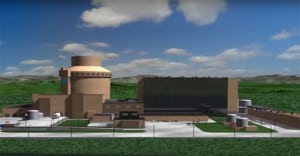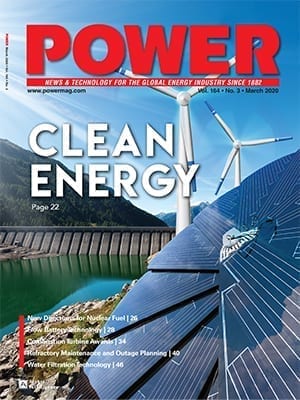
Ever since the One Big Beautiful Bill Act (OBBBA) first surfaced, it has been widely portrayed as an existential threat to the renewable energy transition. From boardrooms to project sites, developers braced for the worst—expecting a wave of regulatory shifts that could undermine years of progress in clean energy deployment.
However, with the latest guidance from the Treasury Department released this August, uncertainty has been replaced by urgency—signaling that the time is now for decision-makers to get moving on their much-needed solar initiatives.
COMMENTARY
We now have clarity, and with it, a clear directive. While the new framework tightens certain provisions and limits flexibility, it also defines the exact path forward for those ready to act. The takeaway for commercial and community solar developers is straightforward: this is the moment to move. The rules of the game are set, and the clock is ticking.
What the OBBBA Means for Renewables
At its core, the OBBBA aims to simplify the federal tax landscape while tightening oversight of credit qualification. For renewable energy, that means the gradual sunset of certain Investment Tax Credit (ITC) provisions and a redefinition of what it means to “start construction” or “place a project in service.”
In practice, the OBBBA links tax credit eligibility to new, stricter standards that demand tangible, physical progress—rather than paperwork or purchase orders—as proof of construction commencement. Developers must now begin construction by July 4, 2026, or have their project placed in service by December 31, 2027, to lock in the current credit levels.
However, The Treasury’s new guidance didn’t just interpret the law—it re-drew the line. Gone are the flexible safe harbor provisions that once allowed developers to secure credits through component procurement or preliminary contracting. In their place stands a “physical work” test designed to ensure real, measurable progress before incentives are claimed.
The Treasury’s Clarification Sets a New Standard for Readiness
Under the revised guidance, large projects (i.e., those of more than 1.5 MW) must show meaningful physical activity on site or at a dedicated manufacturing facility by the July 4th, 2026 deadline. Pouring foundations, setting rebar, or fabricating components now counts; ordering materials or signing a construction agreement no longer does.
For developers of smaller projects, however, the Treasury has extended a lifeline once afforded to all projects. Installations under 1.5 MW remain exempt from these stricter tests, meaning community solar, distributed commercial, and smaller-scale systems can still take advantage of the simpler, safe harbor approach, which allows developers to lock in incentives through things like procurement and construction agreements.
This differentiation speaks to a larger philosophical perspective taken toward renewables by the OBBA: anything short of shovels in the ground will not save larger solar projects. In my opinion, there are two ways you can look at these provisions: as punishment or motivation. The message is clear, the opportunity to capitalize on today’s existing tax credits hasn’t disappeared. And now that developers have clarity around what they need to do to secure them, the only thing left to do is take action.
Short-Term Challenges Gloss Over Long-Term Benefits
These new parameters are reshaping project pipelines across the country. Developers are accelerating project plans, revisiting financing schedules, and racing to secure partnerships before the window closes. Demand for transformers, panels, and skilled labor is already intensifying, as stakeholders rush to meet physical work requirements.
Yet, despite the tightened timeline, the underlying economics of solar remain incredibly strong. The cost curves for hardware and storage continue to trend downward, while corporate demand for renewable power purchase agreements (PPAs) grows steadily. At the same, thanks to the current AI-driven data center boom, electricity prices continue to skyrocket and show little to no signs of lowering. The value of locking in rates and owning one’s own energy future cannot possibly be overstated in such a climate.
Finally, while federal incentives may be on the way out (for now), all signs suggest that state and local legislatures are stepping up to fill the void. Taken together, it’s clear that the OBBBA is not curtains for renewable energy development—it’s a call to action. I’m confident that in just a few short years’ time, we will look back at this bill as a forcing function; a less than ideal turn of events that pushes our industry to act with speed and intention. And that’s exactly what our rapidly-maturing sector needs right now.
A Quick Guide to Fast Solar Action
If you’re a solar developer or financier, the next 18 months will define your project portfolio for years to come. Here’s how to navigate the new reality. If you’re interested in getting the most value out of your solar project, take the following steps to lock in federal incentives before they fade:
- Assess your portfolio immediately: Identify which projects exceed 1.5 MW and which qualify for the small-project exemption. Prioritize accordingly.
- Create workback schedules from deadlines: To start construction by the July 2026 deadline, projects should be permitted, financed, and contracted as soon as humanly possible.
- Document physical work carefully: Keep detailed records of construction milestones and component fabrication to satisfy the Treasury’s new “physical work” definition. There’s no such thing as “too much” proof in this scenario.
- Engage experts early. Consult with tax advisors, engineers, and legal counsel to ensure no stone is left unturned when it comes to compliance, and optimize your deployment plans from the jump.
- Lock in your supply chain. WIth the race to meet deadlines in full swing, expect tightening supplies around labor and materials; especially for large-scale, resource-intensive projects.
- Leverage local and state incentives. Just because federal incentives are fading doesn’t mean there aren’t other benefits available. Look to municipal programs, green banks, and state energy offices to offset potential reductions in federal support.
- Stay flexible. Smaller, distributed projects can be a fast, efficient way to capture existing benefits in a timely manner, all while managing exposure and risk.
Developers who move decisively now will not only capture remaining tax credits, they’ll establish a significant and long-standing competitive advantage in an increasingly constrained and contentious market.
An Unexpected Challenge That Will Accelerate Long-Term, Positive Change
While the OBBBA undeniably creates headwinds for the industry, it is far from insurmountable. The economics of solar haven’t changed. The transition to clean energy is still accelerating. Electricity demand is surging, driven by data centers, electrification, and industrial decarbonization. And solar remains one of the most cost-effective solutions to meet that demand. And none of that will change after 2027.
The One Big Beautiful Bill Act may have narrowed the lanes, but it has also paved the road. We now know exactly what it takes to qualify for incentives, and exactly when those opportunities expire. For developers, utilities, and community partners, the message couldn’t be clearer: act now or risk being left behind. By taking deliberate, physical steps today, the industry can secure its future tomorrow.
—Jared Haines is CEO at Catalyze.










